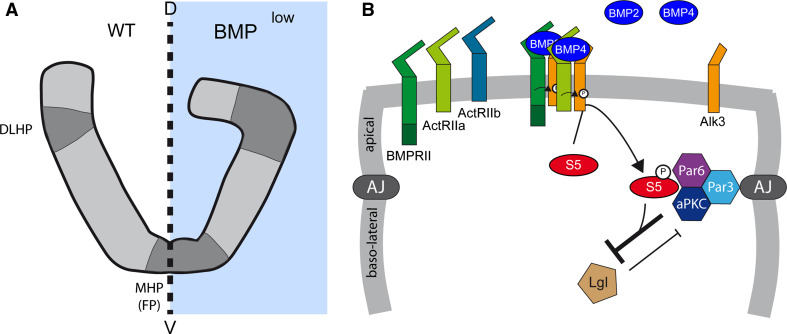Fig. 3.
BMP activity during neural tube closure. a Representation of the developing spinal cord at the neural plate stage under normal conditions (WT) and when BMP signaling is dampened (BMPlow). Blocking BMP signaling can result in the formation of exaggerated median and dorsal lateral hinge points (MHP, DLHP), which exacerbate apical cell constriction and the bending of the neural plate, thereby perturbing neural tube closure. b Hypothetical molecular mechanism by which BMPs regulate neural tube closure. BMP ligands, probably BMP2 and BMP4, activate a receptor complex that is likely to contain BMPR2 and Alk3, and which promotes Smad5 activation. During this process, Smad5 acts in a non-classical (transcription-independent) manner by physically interacting with and stabilizing the apical polarity complex formed by Par3, Par6, and aPKC at the level of adherens junctions (AJ). This prevents components such as lethal giant larvae (Lgl) from destabilizing the polarity complex and disrupting the adherens junctions, a pre-requisite for apical cellular constriction

